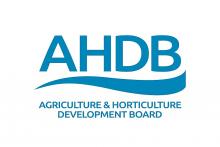The principles of Soil Management are set out in AHDB's Soil Management Guide

Share resources, groups and projects that you've found helpful for soil management.
Recommended Content
Content below is from across the PEP community and is not necessarily endorsed by Stewards or by PEP
Connected Content
ADAS provides ideas, specialist knowledge and solutions to secure our food and enhance the environment. We understand food production and the challenges and opportunities faced by organisations operating in the natural environment
Soil is an essential natural resource for all farmers. Over recent years many initiatives have sought to provide information and advice on soils and Soil Health, notably AHDB Great Soils.
Anglian Water is the largest water and water recycling company in England and Wales by geographic area. We supply water and water recycling services to almost seven million people in the East of England and Hartlepool.
Field drainage is installed to rapidly remove excess soil water to reduce or eliminate waterlogging and return soils to their natural field capacity. Drains can be used to control a water table or to facilitate the removal of excess water held in the upper horizons of the soil.
Tell us how you are improving your soils. Share useful resources, organisations and initiatives.
The intricate web of relationships between physical, chemical and biological soil components underpins crop and livestock health and productivity.
Innovation for Agriculture (IfA) is an independent knowledge exchange charity that aims to bridge the gap between science and practice.
MINAGRIS is an EU-funded project which is aiming to contribute to healthy soils in Europe by providing a deeper understanding and tools to assess the impact of microplastics and nanoplastics in agricultural soil health.
Share your ideas and experience of how to improve nutrient efficiency and reduce dependence on artificial fertilisers
Good soil structure is vital for optimising water and nutrient use efficiency; and for sustaining profitable cropping systems. Poor soil structure and compaction can reduce yields, restrict access for field operations, increase fuel use and, for high value root and vegetable crops, increase reliance on irrigation. Where there are clear signs of soil compaction, cultivations to remove the compaction may result in a yield benefit. Visual soil assessment is important to assess the extent and depth of compaction and to inform decisions on the most appropriate course of action.
ADAS Farming Association membership provides independent strategic technical support to help you improve farm productivity. We put current research into perspective and offer clear guidance on forthcoming agronomy decisions for our members. We also cover non-agronomy topics such as biofuels, waste regulations etc. Conferences and meetings will cover various topics and can be attended by any member. All of our events and publications will be allocated the appropriate BASIS and NRoSo points.
Established in 1971, Cambridge based Delta-T Devices specialises in measurement sensors and monitoring systems for agriculture and horticulture.
Guidance from AHDB to help adapt arable cultivations on a rotational basis Download the Guide, watch videos and use the tools.
Series by the Farmers Guardian exploring issues around cultivations and establishment
Guide by Graham Shepherd (Landcare Research, New Zealand) giving an approach to assessing soil qu
Soil organic matter (OM) is all living or once-living materials in the soil. OM provides a direct source of energy/food for many soil organisms: it is the fuel in the soil food web. Turnover of OM successively releases and immobilises elements vital to the nutrition of crops.
Direct drilling, also known as no-till farming or zero-till farming, is an agricultural practice that involves planting crops without prior ploughing or cultivation of the soil.
Healthy, well-managed soils are the foundation for productive farming systems. Taking steps to improve soil health is a vital part of future-proofing all farms against the challenges of climate change and changing government support, by supporting good yields and reducing environmental impacts. Every farm and field is different and there is no single approach for creating healthy soils. These printable guides give targeted guidance for a range of farming systems. They have been developed by a wide-ranging partnership across the farming industry brought together by the UK Soil Health Initiative, the WWF-Tesco Partnership and CFE to help you to identify the actions you can take to better manage soils for a sustainable future. https://www.cfeonline.org.uk/environmental-management/soils/uk-soil-health-initiative-guides/
Group coming out of the YEN looking at ways to increase deep rooting, by encouraging deep burrowing earthworms.
Soilscapes is a 1:250,000 scale, simplified soils dataset covering England and Wales.
Among legume crops, forage peas and field beans show the most symptoms of legume fatigue.
Soil organic matter (SOM) serves as an important indicator of soil health.
Six Simple Steps for your soil to help improve the performance, health and long-term sustainability of your land
Adding organic materials can potentially lead to better drainage, more resilient soil, more efficient irrigation, higher crop yields and better crop quality.
The British Society of Soil Science (BSSS) is delighted to announce the next Zoom into Soil webinar will take place on Wednesday 7 February from 12:00 - 1:00pm (UK time) and is free of charge to register.
Join this webinar to hear from monitor farmer David Cross and independent consultant Dr Liz Genever as we discuss soil health and other updates from the Monitor Farm.
With soil cultivation expert Philip Wright Join ADAS as we discuss how to maintain good soil structure and best cultivation practices.
Crop yields from zero tillage practices improve with time. Controlled traffic farming increases c


